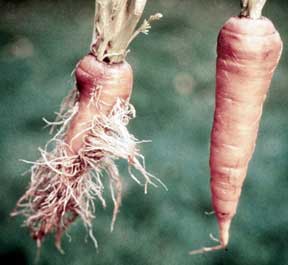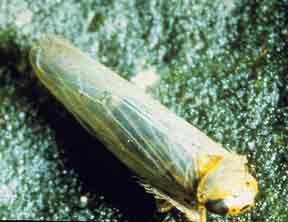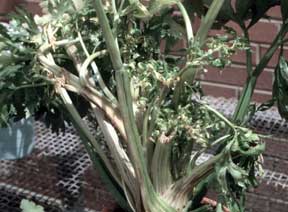Aster leafhopper and aster yellows testing 2007
Editor’s note: This article is from the archives of the MSU Crop Advisory Team Alerts. Check the label of any pesticide referenced to ensure your use is included.
In 2000, we began to test a new method to accurately and quickly determine the proportion of leafhoppers that were carrying aster yellows. This proportion, along with absolute numbers of leafhoppers present, determines the risk of aster yellows to a particular crop and, in turn, determines whether an insecticide application is warranted. Prior to 2000, to estimate aster yellows risk, it was necessary to collect aster leafhoppers, place them on plants and then wait several weeks for aster yellows symptoms to develop. This was time consuming and costly and the number of leafhopper populations that could be tested was limited. In the late 1990’s, new molecular methods were developed that allowed for faster, more inexpensive results. In 2005, aster leafhopper testing moved from the Vegetable Entomology Lab to Diagnostic Services. Aster leafhopper testing is available to everyone in the state of Michigan.
How do I send in samples to Diagnostic Services?
Leafhoppers can be collected with sweep nets. After the leafhoppers are counted (to determine the number of leafhoppers per 100 sweeps), place them in a plastic bag or other container and keep them (preferably) frozen or refrigerated until shipping. Leafhopper samples should be enclosed in small box-like containers (for example, plastic containers used for storing food) and then shipped to Diagnostic Services via priority mail. Alternatively, the leafhopper samples can be delivered directly to Diagnostic Services on the campus. Each sample should be marked with location and date collected, and multiple samples can be shipped together. The aster leafhoppers do not have to be kept alive. However, we recommend that you avoid mailing the samples on Thursday or Friday so they do not sit in the post office over the weekend. Please fill out a submittal form for each sample. For more information on how to submit samples to Diagnostic Services, please see http://www.pestid.msu.edu/.
Diagnostic Services will need a minimum of 40-50 leafhoppers to run a test. However, several smaller samples from nearby sites can be grouped and tested together.
How will I receive results?
Results will be provided to cooperators by MSU Vegetable Entomology. Cooperators should indicate which contact method (phone, fax, email, etc.) they prefer. Results will be delivered either the day of testing (in most cases) or the next morning. We will provide the estimated percent infectivity of aster leafhoppers and suggested treatment threshold for that crop for each sample tested.
What is the cost for aster leafhopper testing?
The cost of testing varies with the size of the sample. We recommend a minimum sample size of 40 leafhoppers; anything less will give unreliable results. Cost for 40 leafhoppers is approximately $25 to $30. More reliable results can be obtained with more leafhoppers. Each additional 8-10 leafhoppers increases the cost of the test by $5.00.

Aster yellows symptoms on carrot root.

Aster leafhopper.

Aster yellows symptoms on celery.
For more information please contact Beth Bishop at (517) 355-5154.



 Print
Print Email
Email


